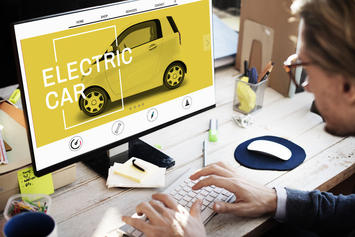
With a simple stroke of the pen, Governor Newsom believes he has the power to change the lifestyles of all California residents, and control the supply-demand balance for societies and the economy’s transportation needs.
Since half the electronic vehicles (EVs) in the entire country are registered in California, the troubling news is that there may be warning signs about a bust to the EV growth bubble, as the statistics from California demonstrate that:
-
The highly educated and financially well-off are currently the primary owners of EVs.
-
EV usage being slightly more than 5000 miles a year is a reflection that the EV is a second vehicle and not the family workhorse vehicle.
-
The growing percentage of EV owners who are switching back to gasoline cars is a message that may deflate EV growth projections.
-
The larger and heavier gasoline driven SUVs are currently half of the new car sales.
Governor Newsom apparently did not read the required reading for the next EV owner, “Drawbacks of EVs,” before he announced on September 23, 2020, an executive order to ban the sale of gas-powered vehicles by 2035. He is directing the state to require that, by 2035, all new cars and passenger trucks sold in California be zero-emission vehicles.
Maybe the residents of the other 49 states that collectively make up the other 50 percent of EVs in America (approximately one percent per state) have read what California Governor Newsom has not comprehended from the following drawbacks of EVs provided by Motor Junkie:
20. Short Range Anxiety. Range anxiety is the number-one factor when it comes to EV downsides. Simply put, modern electric vehicles are still range-limited due to their small capacity batteries. Most affordable electric cars on the market have a bit more than a 130-mile-range.
19. Long Charging Times. Even though Tesla and Porsche have made significant improvements, charging is still far from the speed to fill a gas tank. Putting the fuel in your car only takes a couple of minutes compared to charging your vehicle overnight.
18. Trip Planning Problems. Small ranges and long charging times can put a strain on any road trip plans. You cannot plan a fast trip in an electric car without knowing the location of charging stations. You will also need to know the estimated duration of charging or supercharging.
17. Mostly Good for Urban Use. The EVs range is longer if you drive in the city. Second, there are far more charging stations in metropolitan areas.
16. Not So Environmentally Friendly. Did you ever think about what it takes to make just one electric vehicle? Apparently, the process of making a big chunk of lithium-ion batteries from the exotic minerals and metals mined in foreign countries, as well as their disposal, is polluting since they are not recyclable. The weakest link to EV growth is the material supply chain. There may not be enough minerals and metals in the world to achieve the planned EV growth.
Read the rest of this piece at CFact.org.
Ron Stein is an engineer who, drawing upon 25 years of project management and business development experience, launched PTS Advance in 1995. He is an author, engineer, and energy expert who writes frequently on issues of energy and economics.












